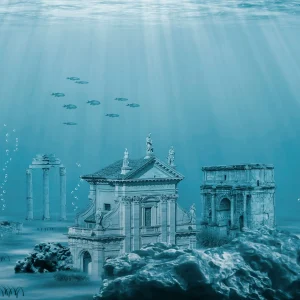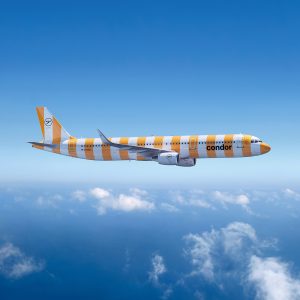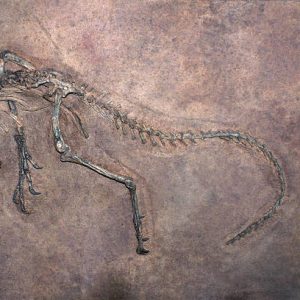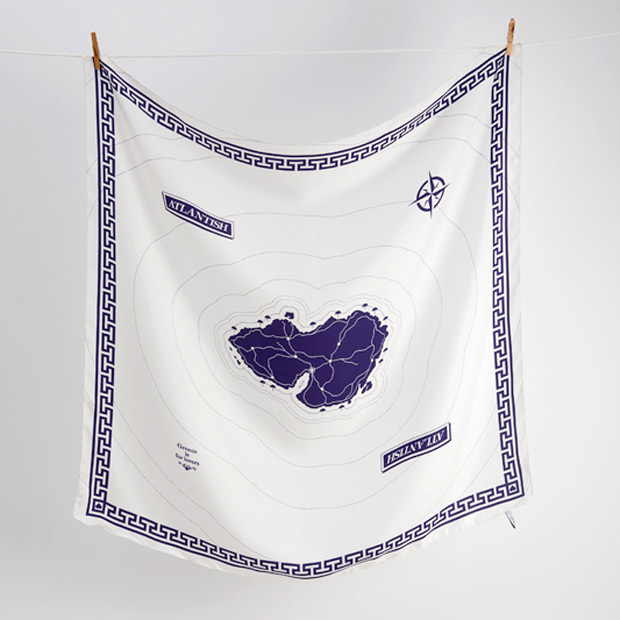Link About It: This Week’s Picks
A “bonkers” dinosaur discovery, candy-colored planes, chatty fungi and more

Scientists Plan to Uncover Yorkshire’s Sunken “Atlantis”
 Daniel Parsons, a professor of sedimentology who leads the University of Hull’s Energy and Environment Institute, plans to utilize high-resolution sonar systems (along with insight from local fisherman) to uncover the sunken port town of Ravenser Odd. This ancient village was destroyed in the 14th century due to weather-induced coastal erosion, and studies of similar circumstances in the Bay of Naples have revealed that “towns aren’t simply washed away; they leave evidence of their presence on the seabed,” according to Candida Moss at The Daily Beast. Parsons’ quest is more than the search for one “Atlantis” off the coast of England. From pondering other discoverable lost cities (such as those of India, Egypt and Turkey) to reinforcing the dangers of climate change, the implications are many. Read more about Ravenser Odd and other legendary destinations at The Daily Beast.
Daniel Parsons, a professor of sedimentology who leads the University of Hull’s Energy and Environment Institute, plans to utilize high-resolution sonar systems (along with insight from local fisherman) to uncover the sunken port town of Ravenser Odd. This ancient village was destroyed in the 14th century due to weather-induced coastal erosion, and studies of similar circumstances in the Bay of Naples have revealed that “towns aren’t simply washed away; they leave evidence of their presence on the seabed,” according to Candida Moss at The Daily Beast. Parsons’ quest is more than the search for one “Atlantis” off the coast of England. From pondering other discoverable lost cities (such as those of India, Egypt and Turkey) to reinforcing the dangers of climate change, the implications are many. Read more about Ravenser Odd and other legendary destinations at The Daily Beast.
Image courtesy of Getty
How Mushrooms Talk To Each Other
 A new study (led by professor Andrew Adamatzky at the University of the West of England) has found that mushrooms communicate with each other via electrical signals that are similar to human speech—making them “champignon communicators.” This theory is thanks to an experiment where the team analyzed electrical spikes in four species: enoki, split gill, ghost and caterpillar fungi. This was done by inserting “tiny microelectrodes into substrates colonized by their patchwork of hyphae threads, their mycelia.” The belief is not only that mushrooms communicate, but that they do so in order to share information about food or “injury with distant parts of themselves, or with hyphae-connected partners such as trees.” Read more about this fascinating find at The Guardian.
A new study (led by professor Andrew Adamatzky at the University of the West of England) has found that mushrooms communicate with each other via electrical signals that are similar to human speech—making them “champignon communicators.” This theory is thanks to an experiment where the team analyzed electrical spikes in four species: enoki, split gill, ghost and caterpillar fungi. This was done by inserting “tiny microelectrodes into substrates colonized by their patchwork of hyphae threads, their mycelia.” The belief is not only that mushrooms communicate, but that they do so in order to share information about food or “injury with distant parts of themselves, or with hyphae-connected partners such as trees.” Read more about this fascinating find at The Guardian.
Image courtesy of Florian van Duyn/Unsplash
German Airline Condor Debuts Whimsical Striped Airplanes
 In opposition to the bland exteriors of most airplanes at commercial aviation companies, German airline Condor has unveiled colorful candy-striped designs for their aircraft. Condor’s Berlin-based creative agency, Vision Alphabet, looked to “parasols, bath towels and beach chairs” to inform the design, according to a statement, and that whimsy—which is intended to inspire nostalgia for past vacations—is evident. The first striped craft in the fleet already took flight on 5 April, from Frankfurt, Germany to Lanzarote in the Canary Islands. Read more about the five bold color options (and what they mean) at CNN.
In opposition to the bland exteriors of most airplanes at commercial aviation companies, German airline Condor has unveiled colorful candy-striped designs for their aircraft. Condor’s Berlin-based creative agency, Vision Alphabet, looked to “parasols, bath towels and beach chairs” to inform the design, according to a statement, and that whimsy—which is intended to inspire nostalgia for past vacations—is evident. The first striped craft in the fleet already took flight on 5 April, from Frankfurt, Germany to Lanzarote in the Canary Islands. Read more about the five bold color options (and what they mean) at CNN.
Image courtesy of Condor
Mercedes and Virgil Abloh’s Limited Edition Maybach
 The highly anticipated, limited edition Mercedes-Maybach S-Class S680 created by Mercedes and Virgil Abloh has been realized and is poised for release. The bespoke vehicle was conceived of by the late designer, artist, architect and Off-White founder along with Mercedes-Benz Chief Design Officer Gorden Wagener in 2021, and was finalized before Abloh’s passing later in the year. The car—which is the final chapter of Project MAYBACH—is strictly limited to 150 units. The two-tone machine exudes luxury, but is spattered with plenty of Abloh’s playful touches. Accompanying the vehicle release is a capsule collection designed with Off-White, including T-shirts, crewneck sweaters, hoodies, caps and more—which all carry the black and sand hues from the car. Read more at Mercedes-Benz.
The highly anticipated, limited edition Mercedes-Maybach S-Class S680 created by Mercedes and Virgil Abloh has been realized and is poised for release. The bespoke vehicle was conceived of by the late designer, artist, architect and Off-White founder along with Mercedes-Benz Chief Design Officer Gorden Wagener in 2021, and was finalized before Abloh’s passing later in the year. The car—which is the final chapter of Project MAYBACH—is strictly limited to 150 units. The two-tone machine exudes luxury, but is spattered with plenty of Abloh’s playful touches. Accompanying the vehicle release is a capsule collection designed with Off-White, including T-shirts, crewneck sweaters, hoodies, caps and more—which all carry the black and sand hues from the car. Read more at Mercedes-Benz.
Image courtesy of Mercedes-Benz
Fossil Dated to The Very Day of Dinosaur Extinction

In a discovery described as “absolutely bonkers” by Phillip Manning, professor of natural history at the University of Manchester, scientists have found a leg belonging to a thescelosaurus that died on the day an asteroid strike killed the dinosaurs. The leg—which is perfectly preserved and even has skin still attached—is embedded with “debris from the impact, which rained down only in its immediate aftermath.” Scientists at the Tanis dig site in North Dakota, where the fossil was found, can date discoveries there incredibly accurately using this debris, rather than using the traditional carbon dating technique. The team at the site also found a fish that breathed debris into its lungs, and what might be a fragment of the asteroid itself. Perhaps they will uncover even more remarkable remnants from the day 66 million years ago when an asteroid hit the Gulf of Mexico. Read more at The Guardian.
Image courtesy of iStock
Link About It is our filtered look at the web, shared daily in Link and on social media, and rounded up every Saturday morning. Hero image courtesy of Florian van Duyn/Unsplash












